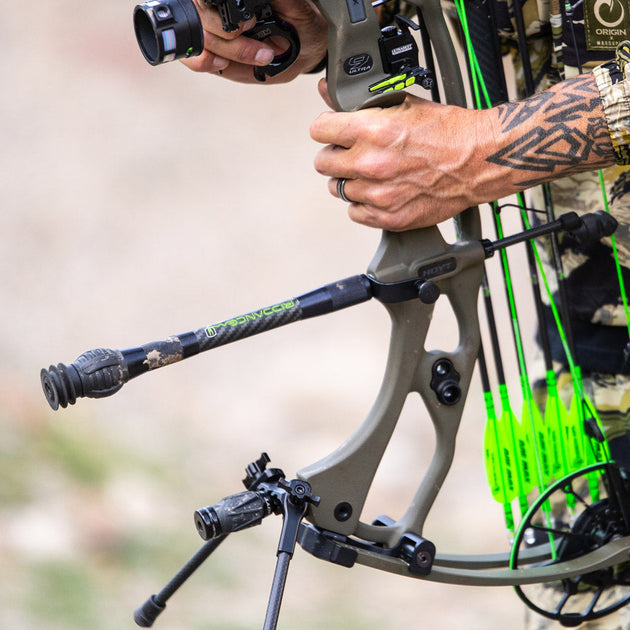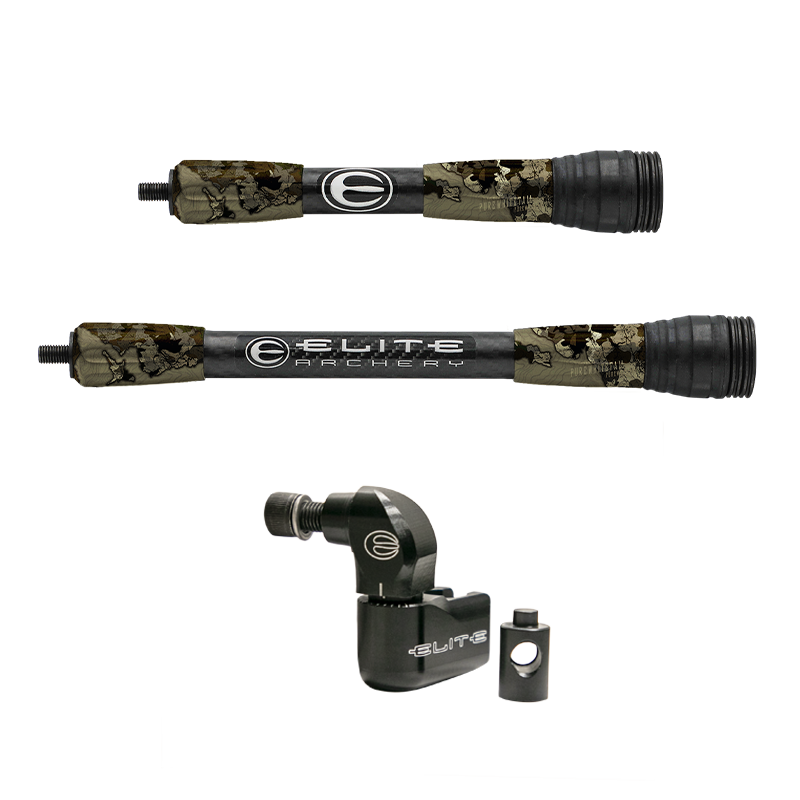Boost Your Archery Efficiency: The Ultimate Guide to Bow Stabilizer Configuration
Enhancing your archery performance requires a precise technique to every facet of your equipment setup. Among the various components that contribute to accuracy and stability, the bow stabilizer plays a critical role in refining your shot execution. Comprehending exactly how to enhance your bow stabilizer configuration can cause considerable enhancements in your general accuracy and uniformity on the variety or in the area. As we explore the complexities of choosing the appropriate stabilizer weight, positioning, and tweak methods, you will certainly discover the trick to unlocking your full capacity as an archer.
Understanding Bow Stabilizers
In the realm of archery equipment, the duty and feature of bow stabilizers stand as essential components for boosting shooting accuracy and security. Bow stabilizers are developed to minimize bow torque, minimize vibrations, and aid in holding the bow consistent during the intending and release process. By affixing a bow stabilizer to the riser of the bow, archers can experience enhanced balance and lowered hand shock, leading to more accurate and regular shots.
The main function of a bow stabilizer is to wet any kind of resonances that take place upon releasing the arrow. This decrease in resonance not just improves the shooter's convenience but likewise helps preserve emphasis and control throughout the shot cycle. In addition, bow stabilizers help in counterbalancing the weight of accessories connected to the bow, such as sights, quivers, and arrowhead relaxes, making sure ideal weight distribution for improved security.
Recognizing the technicians and advantages of bow stabilizers is important for archers wanting to fine-tune their shooting efficiency and attain higher accuracy on the variety or in the area.

Selecting the Right Stabilizer Weight
Choosing the suitable weight for your bow stabilizer is a crucial facet of maximizing your archery configuration for boosted capturing efficiency. The stabilizer weight directly affects exactly how efficiently the stabilizer decreases resonance and stabilizes your bow throughout the shot. When choosing the appropriate stabilizer weight, it's important to consider your shooting design, bow balance, and individual preferences.
Lighter stabilizers, commonly evaluating between 3-6 ounces, are preferred by archers who focus on maneuverability and fast target procurement. On the various other hand, heavier stabilizers, varying from 8-12 ounces or even more, are favored by target archers looking for optimum stability and decreased bow movement.
Ultimately, the most effective stabilizer weight for you will certainly depend upon your shooting goals and choices. Trying out various weights and discovering the one that provides the optimal balance of stability and maneuverability is vital to boosting your archery performance.
Putting Up Your Bow Stabilizer
To correctly install your bow stabilizer, make sure that you have all the necessary tools and adhere to these step-by-step directions for a efficient and safe and secure configuration. Beginning by identifying the front stabilizer bushing on your bow riser. The majority of bows have pre-threaded openings for stabilizer installment. Next off, apply a small quantity of bowstring wax to the strings of the stabilizer bolt to stop it from loosening throughout usage.
Thoroughly string the stabilizer right into the front bushing by hand, making sure not to cross-thread it (bow stabilizer). Once the stabilizer is well in position, use an appropriate wrench to tighten it safely. Avoid over-tightening, as this can trigger damage to the bow or stabilizer
After installing the stabilizer, check to guarantee it is straight and aligned with the bow. Some stabilizers include adjustable weights or dampeners; change these according to your preferences and shooting design. Test the bow to make certain the stabilizer is successfully reducing resonance and improving your shot uniformity.
Readjusting Stabilizer Setting for Precision
After setting up the bow stabilizer safely, optimizing its position is essential for improving precision in your shooting. The position of the stabilizer can considerably affect the balance and security of your bow during the shot cycle. To readjust the stabilizer for optimal precision, begin by exploring with various positions. Moving the stabilizer closer to the riser can help minimize the bow's general weight circulation, potentially enhancing your intending stability. Conversely, expanding the stabilizer even more out can enhance the bow's mercy and lower the impacts of torque on the shot.
When readjusting the stabilizer setting, consider the kind of shooting you do. For target archery, a longer stabilizer hop over to these guys positioned better out could be helpful for added security during the intending process. On the various other hand, hunters may prefer a much shorter stabilizer for better ability to move in the area. Remember to make small modifications and test your setup after each modification to identify the ideal setting for your shooting design and preferences.
Fine-Tuning Your Stabilizer Setup

Furthermore, take into consideration the placement of any kind of dampeners or weights along the stabilizer rod. Relocating these components closer to or additionally from the riser can alter the stabilizer's general result on your bow's balance. Fine-tuning these details can help in reducing resonance, decrease hand shock, and improve total control during the shot execution.
Frequently reassess your stabilizer arrangement as your shooting method evolves to ensure it remains to complement your type and shooting goals. By finetuning your stabilizer setup with precision and treatment, you can enhance your bow's efficiency and raise your archery abilities to brand-new elevations.
Conclusion
In final thought, maximizing your bow stabilizer arrangement is essential for enhancing your archery efficiency. By understanding the purpose of stabilizers, selecting the proper weight, appropriately installing and positioning the stabilizer, and tweak its configuration, you can boost your precision and consistency in shooting. Take the time to experiment with different configurations and changes to find the configuration that functions ideal for you and assists websites you attain your archery objectives.
Bow stabilizers are developed to decrease bow torque, reduce resonances, and assist in holding the bow consistent during the intending and release procedure. By attaching a bow stabilizer to the riser of the bow, archers can experience improved equilibrium and lowered hand shock, resulting in even more regular and specific shots.

The stabilizer weight straight affects exactly how successfully the stabilizer lowers vibration and stabilizes your bow during the shot. bow stabilizer. By understanding the function of stabilizers, selecting the proper weight, properly positioning the stabilizer and setting up, and fine-tuning its configuration, you can boost your accuracy and consistency in capturing